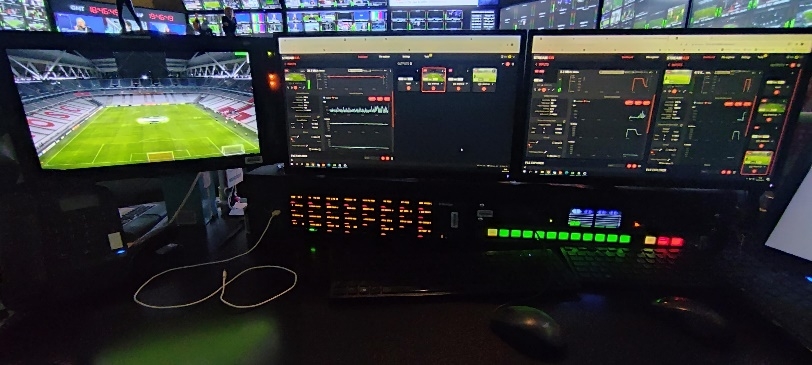Thursday December 14, the Mastiffs of Lille hosted the Faroese club KÍ Klaksvík for the sixth day of the C4 of the UEFA Europa Conference League. Beyond the result – LOSC won 3-0 – another event took place off the field. The teams from RMC Sport and BFM Grand Lille (Altice Media) who covered the match broadcast their reports from the Pierre Mauroy stadium using a 5G connection from SFR called stand alone (SA). A first in France.
As a reminder, 5G SA corresponds to “real 5G”. Since the launch of the standard at the end of 2020, operators have covered the territory with 5G antennas but their core network has largely remained in 4G. This 4G/5G cohabitation has allowed them to increase their network capacities and relieve traffic congestion in dense areas, but without taking full advantage of all the advantages of 5G.
The promises of 5G finally kept
5G SA delivers on the initial promises of the mobile communications standard. That is to say a throughput multiplied by ten and a latency time of the order of a millisecond. The virtualization of network infrastructures, required for the transition to 5G SA, also provides the network slicing technique. Or the possibility of virtually cutting a network into “slices”.
Each “slice” can be isolated from the others and managed independently. “ This new architecture makes it possible to improve the quality of service according to specific needs and, for example, optimize the use of frequencies for strategic uses, in real time. », Explains SFR.
The production of live broadcasts during large, busy events, such as a football match, responds precisely to this use case. The media of the Altice group, of which SFR is a subsidiary, were able to broadcast their broadcasts in real time “ without any alteration, under heavy radio load conditions », the thousands of supporters present at the stadium using 5G smartphones for personal use.
To pass this test, SFR relied on its new 5G SA core network deployed by Nokia and on the telecom infrastructure of the Decathlon Arena Stade Pierre Mauroy in Lille for which it is responsible. The BFM and RMC Sport teams used connected equipment from the company Aviwest allowing live video capture and retransmission.

For critical use cases
One year after covering its head office, the Altice Campus, in 5G SA, SFR demonstrates its ability to deploy, locally and in a real situation, a slicing service. The operator plans to market this solution from 2024 via its BtoB subsidiary, SFR Business. It will be aimed at companies with particularly high levels of requirements for their critical activities in terms of performance, latency or security.
The deployment of 5G SA can be coupled with private 5G. As the name suggests, this involves offering a company its own infrastructure, independent of the public network. This allows it to benefit from guaranteed quality of service and increased security. Essential criteria to cover an activity zone, an industrial site, a port or a logistics platform.
To offer this offer, SFR will rely on Nokia Digital Automation Cloud (DAC 5G), the Finnish equipment manufacturer’s private wireless network service. Businesses will not be the only ones to benefit from these advances. During the LOSC match, the operator also made a first 5G SA connection with a compatible consumer smartphone.
SFR plans “in the medium term” to upgrade its current 5G network to 5G SA for its general public subscribers. Individuals should, on this occasion, discover the real gains brought by pure 5G in terms of coverage, speed and autonomy of compatible terminals. Enough to erase the disappointing experience that has so far prevailed since the commercial launch of 5G?
Photo credits: Altice
